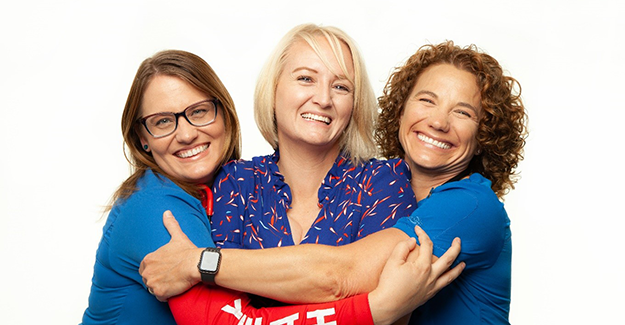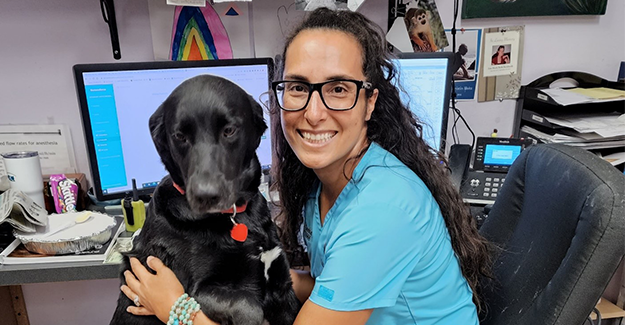Stepping into the driver's seat: Empowering veterinary technicians through practice ownership

Business partners (from left to right): Barbara Batke, DVM, Nikki Frost, CVT, CVPM, SPHR, SHRM-SCP, and Amie Dow, DVM
Veterinary technicians spend countless hours in the trenches, caring for animals and learning the ins and outs of the field. This hands-on experience gives them a deep understanding of veterinary procedures, patient management, and everything in between. When techs become practice owners, they can leverage this expertise to make informed decisions and provide exceptional care for patients.
Can techs own veterinary practices?
As of this writing, there are 15 states in the US—including Florida, Colorado, and California—where nonveterinarians are allowed to own veterinary practices. And even in states with more strict laws, there are still options for a nonveterinarian to be a part-owner in a veterinary practice.
So if you’re a veterinary technician who has mastered the art of client communication, become a whiz at the appointment scheduling game, and maybe dabbled in inventory management, you might be at a point in your career to consider practice ownership.
When a longtime tech becomes an owner
This is what happened to Taryn Singleton at Sycamore Veterinary Hospital in Midlothian, Virginia.
“I bought the same practice I started at in 1987 after 19 years, so I knew every aspect of the practice, which made for a smooth seamless transition,” she said.
Like many techs, she built up her skills and knowledge over time, taking on new opportunities when possible.
“Growing from an LVT to lead tech, to overseeing HR of the support staff, taking on inventory management, managing the veterinarians, being included in business decisions, and finally reviewing and understanding the hospital finances, gave me all the confidence I needed to take on this scary proposition,” she said.
And what she hadn’t learned through hands-on experience, she picked up in other ways.
“While I didn’t have any additional business training, I would attend as many practice management CE sessions as I could,” she said. “I also built relationships with other LVTs in leadership roles to assist me with business questions that came up.”
Meeting community needs
Because veterinary technicians are involved in so many aspects of the practice, they can be the first to know of larger issues affecting access to care in their communities. This was the case for Nikki Frost who jumped into practice ownership simply because it was needed.
“Early June 2020 I was alerted by fellow technicians that the only ER in the entire northern half of Arizona was closing with no option for emergency canine and feline care. I reached out to several veterinarians I knew, hoping to find a doctor interested in the challenge,” she said.
“Three years later, I have two of the best DVM partners and we have two incredible practices—a 24/7 ER and seven-day-a-week dedicated urgent care—with the most amazing team,” she said, adding that, when you open a practice as a vet tech, it can “become a trusted haven for pet owners seeking exceptional healthcare.”
The business learning curve
Veterinary technicians are well-versed in the clinical side of things, but they might not have much formal business training. Fortunately, owning a practice requires a broader skillset, and many technicians may be more qualified than they realize.
Darlene Geekie has two pieces of advice she gives other veterinary technicians looking into practice ownership.
“I think business courses are helpful, especially financial classes and human resources,” she said. “But overall, you must be good at communication. A practice owner is not just dealing with employees, [Profit and loss statements], and inventory. Much of their time is spent in service: Service of clients, staff, and patient care. The rest falls in place if the focus is on people, processes, and products.”

Darlene Geekie balances clinical duties with administrative tasks to keep her team organized and the patient care
at the highest level.
Her second piece of advice? Have a good lawyer—and a backup plan.
“Do nothing without legal advice, and partner smart,” she said. That means "going in with great intentions and making sure you both have an exit plan in the event things don’t work out as planned.”
“Life happens, and amicable splits are best for all involved, including your practice,” she said.
Vet tech owners face possible hurdles with lenders
Owning a veterinary practice takes a significant investment. Not only do you need funds to acquire or set up a practice, but then there are ongoing operational expenses and costs, including property and equipment maintenance, staff salaries, insurance, and savings to cover potential fluctuations in revenue.
Singleton’s advice is to “Plan, plan, and plan some more.”
“How will you finance the purchase of the practice? Will you buy just the business, or the building as well?”
And, unfortunately, nonveterinarians who want to open practices may experience resistance from lenders.
“Our biggest hurdle was obtaining financing for the deal,” she said. “Banks would not loan us the money for the down-payment or starting capital as a 100% nonveterinarian-owned practice. The banks felt it was too risky since LVTs can’t generate income without a veterinarian on staff."
In the end, Singleton and her partners were able to borrow from family, and the seller was willing to do an owner-financed deal.
"There is no ceiling to your career if you don't make one"
Transitioning from a veterinary technician to a practice owner is an adventure filled with growth and fulfillment. You'll be able to channel your passion for animal care into a business that reflects your values and dedication.
There are challenges to overcome, such as developing business management skills, taking on administrative responsibilities, and navigating financial considerations. But with perseverance and a willingness to learn, you can embark on this exciting journey, impacting the wellbeing of animals and your community.
As Geekie said: “There is no ceiling to your career if you don’t make one. You can do it. Always go in with an open mind—and have an exit plan just in case.”
Photos courtesy of those featured
Tasha McNerney BS, CVT, CVPP, VTS (Anesthesia and Analgesia) is a certified veterinary technician and certified veterinary pain practitioner who works closely with the IVAPM to educate the public about animal pain awareness. McNerney has authored numerous articles on anesthesia and analgesia topics for veterinary professionals and pet owners.
Disclaimer: The views expressed, and topics discussed, in any NEWStat column or article are intended to inform, educate, or entertain, and do not represent an official position by the American Animal Hospital Association (AAHA) or its Board of Directors.
NEWStat Interesting/unusual Columnists Patient care Practice management



